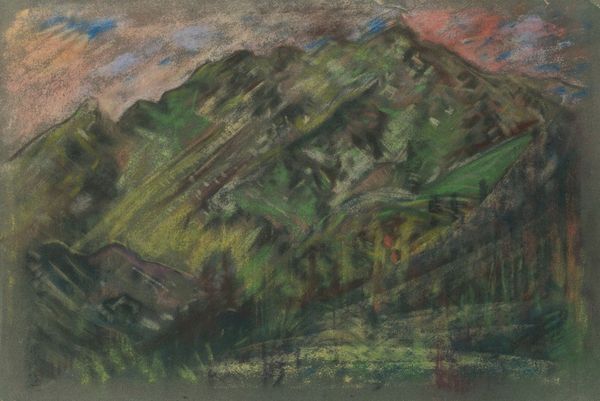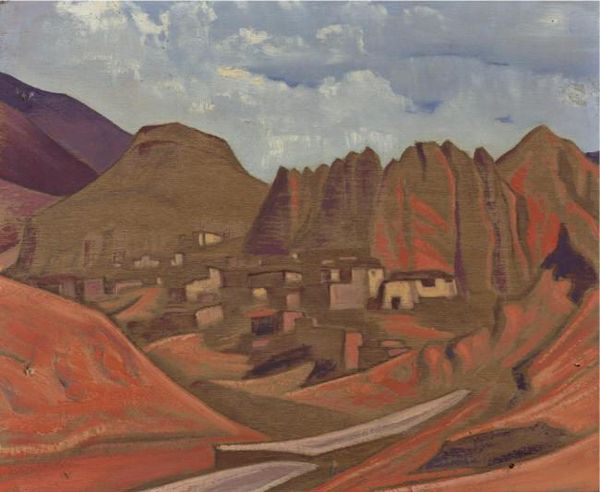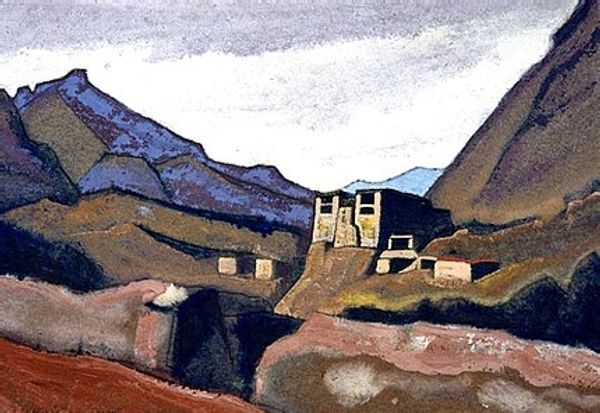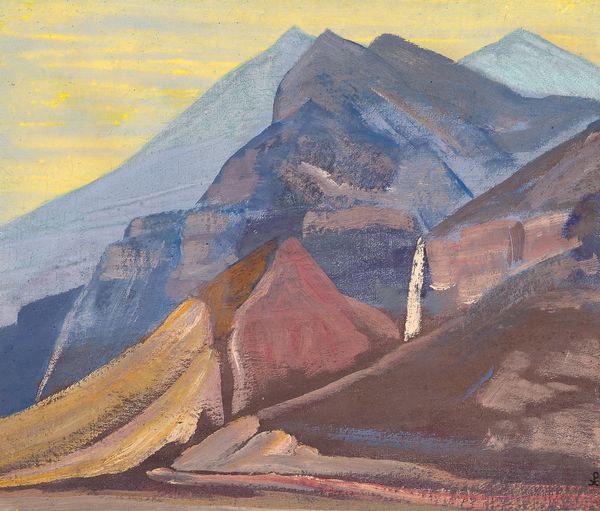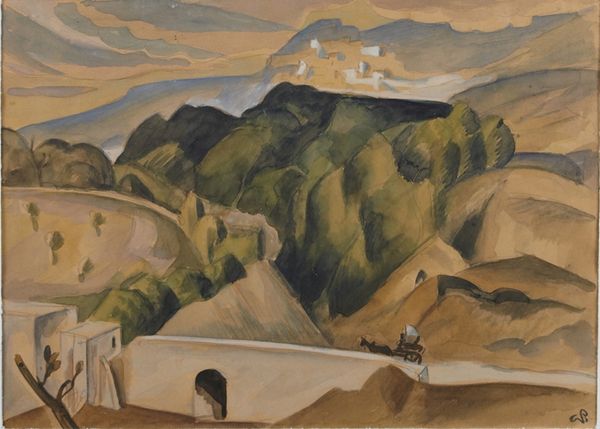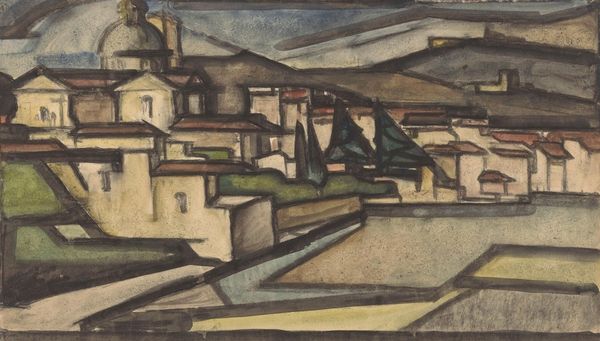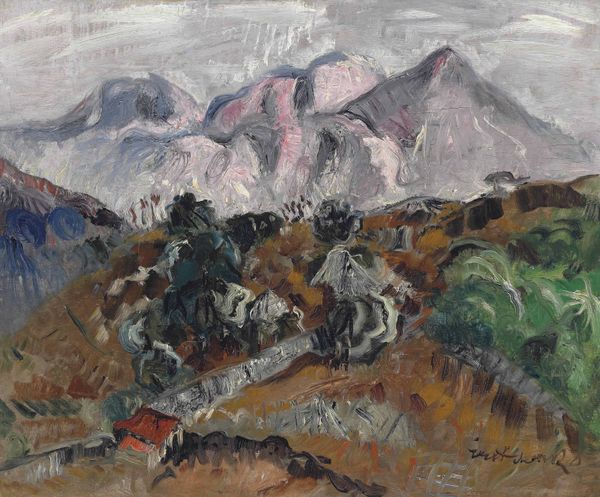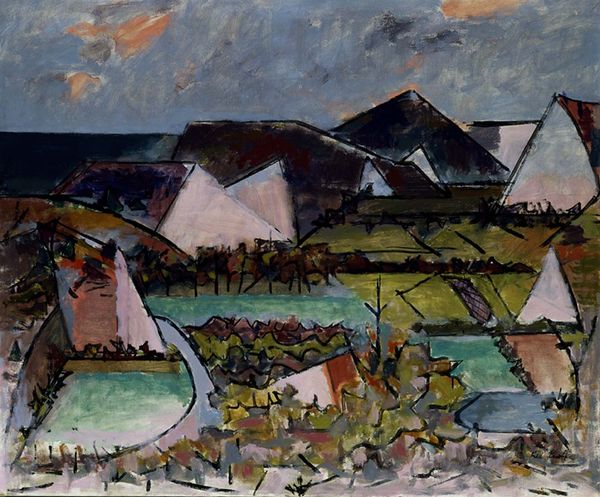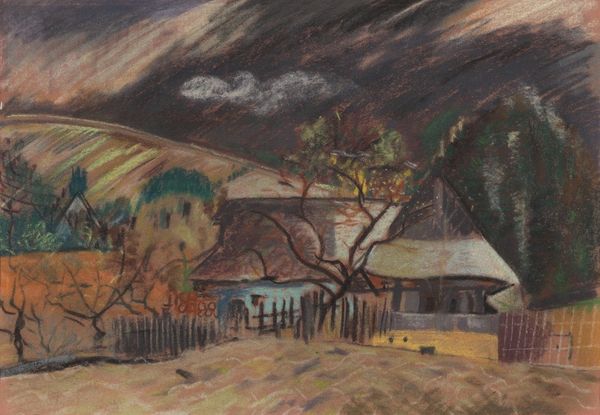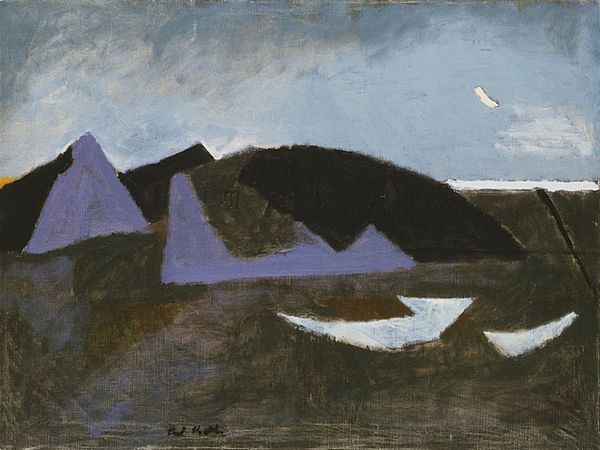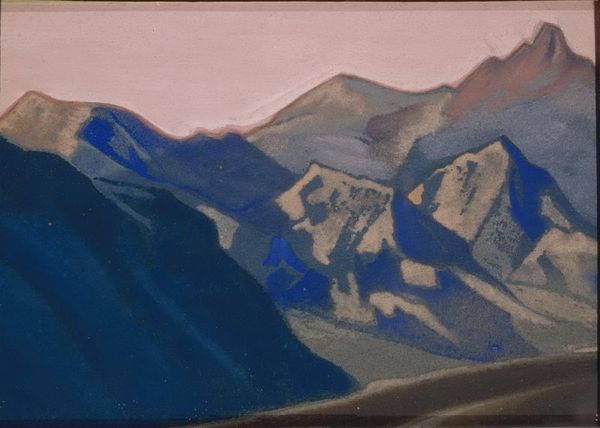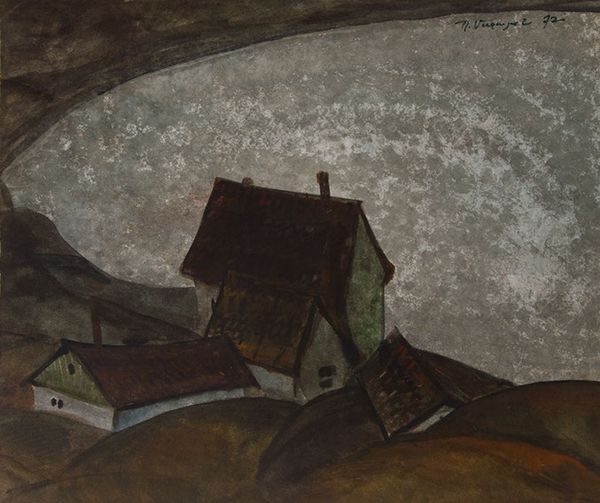
Dimensions: support: 819 x 1079 mm frame: 1054 x 1305 x 120 mm
Copyright: © DACS 2014 | CC-BY-NC-ND 4.0 DEED, Photo: Tate
Curator: Before us hangs Mario Sironi’s “Mountains,” currently housed in the Tate Collections, a landscape painted on a support measuring approximately 81 by 108 centimeters. Editor: Oh, wow. It’s stark, isn’t it? Like a dreamscape after an apocalypse. The palette is all browns and greys, really muted. Curator: Sironi, working in the early 20th century, often engaged with themes of urban decay and industrialization. The muted tones are characteristic. Note the small dwellings nestled at the foot of these looming forms. Editor: It’s oppressive, almost brutal. The mountains feel like they're suffocating the little buildings. But there is a strange beauty in the texture; you can almost feel the roughness of the mountains. Curator: Indeed. The materiality reflects a socio-political environment marked by conflict and rapid change. These are not romantic mountains. Editor: No, definitely not the happy Alps. More like mountains of the mind. I think I need a bit of sunshine after that. Curator: A fitting reaction, I’d say. The work invites us to consider the weight of progress, of material realities.
Comments
Join the conversation
Join millions of artists and users on Artera today and experience the ultimate creative platform.
tate 6 months ago
⋮
Sironi, a fervent nationalist and supporter of the Italian fascist party, began to use motifs associated with ancient Rome in his paintings of the early 1920s. Later works expressed a more primitivist or mythological vision of classicism, addressing the themes of rural work and the family. In this he may have been responding to the fascist Strapaese movement and its idealisation of rural values. Unusually for Sironi, there are no figures in this landscape: the human presence is indicated only by the small, cube-like houses and roads at the foot of the great mountains. The mountains are not thought to depict any particular view, though they may have been inspired in part by the Dolomites where the artist spent his summer holidays. Gallery label, September 2004
